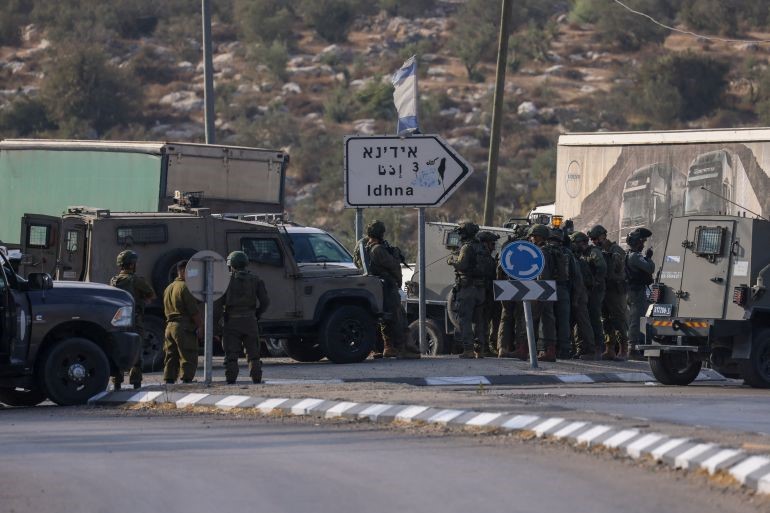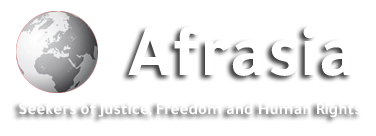
Afrasianet - Ahmed Al , Haila - The Israeli occupation began its intensive and concentrated military campaign in the northern West Bank on August 28, targeting in particular the cities of Tubas, Tulkarm, Jenin, and refugee camps such as Nour Shams, Jenin and Fara'a. What is happening is only a new episode in a series of military campaigns that have not stopped for years, such as the "Defensive Wall", "Mow the Lawn", and "House and Garden", and the current campaign called "summer camps".
Although these campaigns temporarily weakened Palestinian resistance, resistance soon returned, with greater force and wider reach, especially among Palestinian youth. Polls conducted by the Palestinian Center for Policy and Survey Research in June 2024 showed that 75% of Palestinians in the West Bank and Gaza Strip support Operation Al-Aqsa Flood and believe that it has returned the Palestinian cause to global attention.
Campaign Motivations and Objectives
The arrests, raids, and killings in the West Bank did not stop before October 7, but they intensified after the battle of the "Al-Aqsa flood" battle, and during 11 months, it led to the death of more than 600 Palestinians, the wounding of about 5,800, and the arrest of more than 10,000.
However, the question arises: if these campaigns have been ongoing throughout this period, why has the military campaign intensified even more now?
• Resistance in the West Bank:
Despite the intensity of Israeli security operations, the Palestinian resistance has managed to grow in quantity and quality, and has spread inside the West Bank in a way that worries the occupation. The West Bank is a soft side of Israel's security and has historically been a source of commando/martyrdom operations in the heart of Israeli cities, which have been suspended for years, but have returned in light of the continued Israeli crimes against Palestinians.
One such attack was when a young Palestinian arrived in Tel Aviv last month carrying a 10-kilogram explosive device, which exploded while walking down the street. The incident, which would have been even more devastating if the attacker had reached a sensitive target, posed a strategic challenge to Prime Minister Benjamin Netanyahu and his government, which is facing pressure from the security services and the army to strike a deal with Hamas to avoid attrition and drowning in an open confrontation.
• Strengthening settlements:
The expansion of Palestinian resistance is an obstacle to the Israeli settlement project, which is supported by the government led by the ministers of finance and national security, Bezalel Smotrich and Itamar Ben-Gvir, under the leadership of Benjamin Netanyahu.
The Israeli government seeks to increase the number of settlers in the West Bank from 800,000 to 2 million in the next few years with the aim of ending the idea of a Palestinian state, Judaizing Jerusalem and Al-Aqsa Mosque, and annexing the West Bank to Israeli sovereignty by virtue of a de facto policy.
Israeli Finance Minister Smotrich said on Aug. 31, "We are working on the ground to promote settlements and thwart the establishment of a Palestinian state," referring to the military campaign in the West Bank. Ben Gvir also announced his intention to build a synagogue inside the Al-Aqsa Mosque.
• Neutralizing the threat of Hezbollah:
After the occupation managed to contain Hezbollah's response to the assassination of military commander Fuad Shukr and avoid the scenario of a wider war, it decided to direct its efforts towards the West Bank to eliminate the escalating resistance there.
The occupation fears that the West Bank will turn into a new and sustainable arena of attrition, which Hamas seeks to expand from Gaza to the West Bank. Therefore, the occupation army is making every effort to get rid of the threat of resistance in the West Bank, so that Israel will devote its military efforts against the resistance in Gaza and Hezbollah in the north.
Conflicting possibilities
The intensity of Israeli military and security operations, which are carried out in coordination with the Palestinian Authority apparatus, will succeed at best in weakening the resistance in the West Bank temporarily, but it may fail to achieve its goals, if the Palestinian resistance manages to manage the battle throughout the geography of the West Bank, which constitutes 17% of the area of historic Palestine, and by relying on small sleeper cells and "lone wolves", as happened in the Muhannad al-Asoud operation in Tarqumiya, northwest of Hebron, where he single-handedly killed three Israeli officers. By firing only 11 bullets.
The current atmosphere only leads to an explosion of the situation in the West Bank, as the political horizon is blocked, the occupation seeks to liquidate the idea of a Palestinian state, the settlements are increasing and the looting of agricultural land and water continues, and the attacks of settler militias supported by the occupation army are increasing on Palestinian villages.
They are killing Palestinians and burning their homes, farms and cars. This is what Shin Bet chief Ronen Bar warned in a letter to Prime Minister Netanyahu, saying that "Jewish terrorism" could inflame the situation in the West Bank, posing an additional challenge to the depleted occupation army in Gaza, and with Hezbollah in the north. Add to all of the above the continuation of the policies of Judaizing Jerusalem and Al-Aqsa Mosque.
On the other hand, the steadfastness of the Palestinian people in the Gaza Strip, despite the difficult circumstances, and the creativity of the Palestinian resistance in the fighting, are a source of inspiration and motivation for the mobilization of resistance in the West Bank. The latter, when they establish themselves, must adapt to the geographical and demographic conditions of the West Bank, as the successful model of resistance in Gaza does not require the use of the same methods, but rather the rise of vigor and extrapolation of reality.
Critical stage
The resistance movement in the West Bank comes at a critical and decisive stage, playing an important role in two tracks:
• Stop the settlement project , which poses an existential threat to the Palestinian people and their national rights. Self-defense, land and holy sites is the legitimate right of every people engaged in a national liberation struggle, especially after the failure of the negotiations process and the transformation of the Oslo Accords into a political, security and economic burden on the Palestinian people.
• Support the resistance in Gaza , which has been facing a genocidal campaign for 11 months. If we assume that the occupation may be able to win the battle in its favor in Gaza, the West Bank will be the next target to complete the Judaization settlement project, in preparation for its annexation to Israel with American support, international silence and Arab inaction.
Therefore, the unity of the Palestinian resistance position remains necessary to protect the Palestinian cause from the liquidation it has been subjected to for decades. Hence, the current battle in the West Bank is an existential battle and a starting point for shaping the future of the Palestinian people and their national cause.

